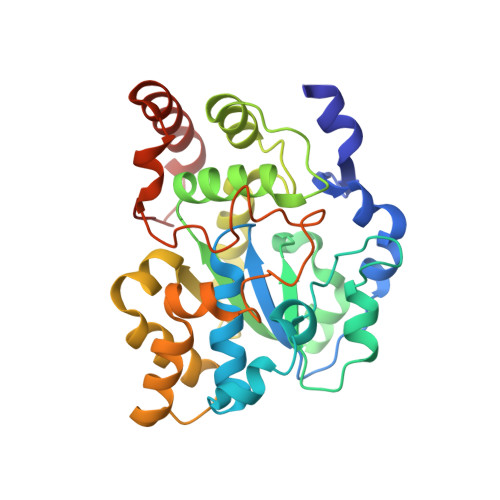Crystallographic analysis of a hydroxylated polychlorinated biphenyl (OH-PCB) bound to the catalytic estrogen binding site of human estrogen sulfotransferase.
Shevtsov, S., Petrotchenko, E.V., Pedersen, L.C., Negishi, M.(2003) Environ Health Perspect 111: 884-888
- PubMed: 12782487
- DOI: https://doi.org/10.1289/ehp.6056
- Primary Citation of Related Structures:
1G3M - PubMed Abstract:
Certain hydroxylated polychlorinated biphenyls (OH-PCBs) inhibit the human estrogen sulfotransferase (hEST) at subnanomolar concentrations, suggesting a possible pathway for PCB toxicity due to environmental exposure in humans. To address the structural basis of the inhibition, we have determined the crystal structure of hEST in the presence of the sulfuryl donor product 3 -phosphoadenosine 5 -phosphate and the OH-PCB 4,4 -OH 3,5,3,5 -tetraCB. The OH-PCB binds in the estrogen binding site with the position of the first phenolic ring in an orientation similar to the phenolic ring of 17 beta-estradiol. Interestingly, the OH-PCB does not bind in a planar conformation, but rather with a 30-degree twist between the phenyl rings. The crystal structure of hEST with the OH-PCB bound gives physical evidence that certain OH-PCBs can mimic binding of estrogenic compounds in biological systems.
- Pharmacogenetic Section, Laboratory of Reproductive and Developmental Toxicology, National Institute of Environmental Health Sciences, National Institutes of Health, Research Triangle Park, North Carolina 27709, USA.
Organizational Affiliation:



















